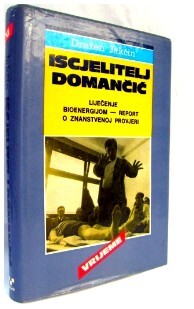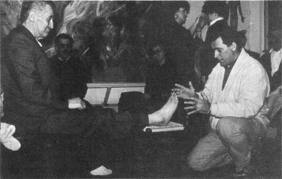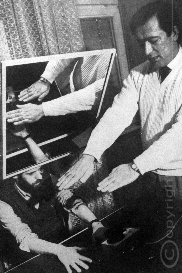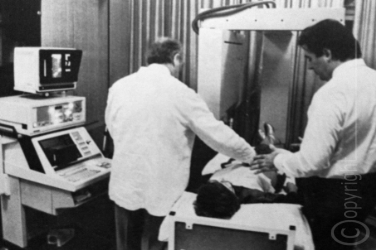Scientific Research
Scientific Research
Treatment of lower limb gangrene

In 1984 Zdenko Domančić agreed to test scientifically the effectiveness of his method in patients with diabetic gangrene in Zagreb. Gangrene is a very serious, severe and incurable disease in the classification of conventional medicine, and at the same time, a very good clinical model which quickly show the success or failure of a method. A number of scientific studies have been carried out in laboratory conditions, which have proven the effectiveness of bioenergy and bioenergy therapy.


treatment either, so that the patient continues to take the medication prescribed by doctors.
After bioenergy therapy, the patient’s condition immediately begins to improve. The pain subsides and vanishes, the leg gets warm, the circullation in the capillaries is faster, the wounds heal and the patient can walk the first day after bioenergy therapy. In short, a miraculous treatment! The success of the treatment and the pace of improvement of the patient’s condition also caused astonishment in Dr. Anton Lobnik, a cardiologist and angiologist from the University Clinical Centre in Maribor.

One descriptive event will be useful to assess the effectiveness of the method. Dr. Josip Čiček, an internist, after seeing the results in person, stated: “According to medical knowledge and opinion R.P. should have been dead already, he would have had two days to live at most, and he is still alive, and his condition is even improving! If someone had told me this, i would not have believed it! Either what i have been taught for decades is wrong, or what Zdenko Domančić has achieved is a true miracle!”

Treatment of lower limb gangrene

In 1984 Zdenko Domančić agreed to test scientifically the effectiveness of his method in patients with diabetic gangrene in Zagreb. Gangrene is a very serious, severe and incurable disease in the classification of conventional medicine, and at the same time, a very good clinical model which quickly show the success or failure of a method. A number of scientific studies have been carried out in laboratory conditions, which have proven the effectiveness of bioenergy and bioenergy therapy.


interfere with conventional treatment either, so that the patient continues to take the medication prescribed by doctors.
After bioenergy therapy, the patient’s condition immediately begins to improve. The pain subsides and vanishes, the leg gets warm, the circullation in the capillaries is faster, the wounds heal and the patient can walk the first day after bioenergy therapy. In short, a miraculous treatment! The success of the treatment and the pace of improvement of the patient’s condition also caused astonishment in Dr. Anton Lobnik, a cardiologist and angiologist from the University Clinical Centre in Maribor.

in 1986 (The healer Domančić, treatment with bioenergy – A report from the scientific research).
One descriptive instant will be useful to assess the effectiveness of the method. Dr. Josip Čiček, an internist, after seeing the results in person, stated: “According to medical knowledge and opinion R.P. should have been dead already, he would have had two days to live at most, and he is still alive, and his condition is even improving! If someone had told me this, i would not have believed it! Either what i have been taught for decades is wrong, or what Zdenko Domančić has achieved is a true miracle!”

Treatment of lower limb gangrene

In 1984 Zdenko Domančić agreed to test scientifically the effectiveness of his method in patients with diabetic gangrene in Zagreb. Gangrene is a very serious, severe and incurable disease in the classification of conventional medicine, and at the same time, a very good clinical model which quickly show the success or failure of a method. A number of scientific studies have been carried out in laboratory conditions, which have proven the effectiveness of bioenergy and bioenergy therapy.


After bioenergy therapy, the patient’s condition immediately begins to improve. The pain subsides and vanishes, the leg gets warm, the circullation in the capillaries is faster, the wounds heal and the patient can walk the first day after bioenergy therapy. In short, a miraculous treatment! The success of the treatment and the pace of improvement of the patient’s condition also caused astonishment in Dr. Anton Lobnik, a cardiologist and angiologist from the University Clinical Centre in Maribor.


